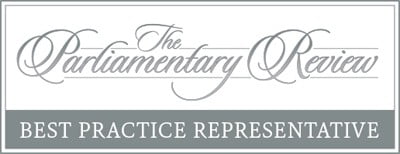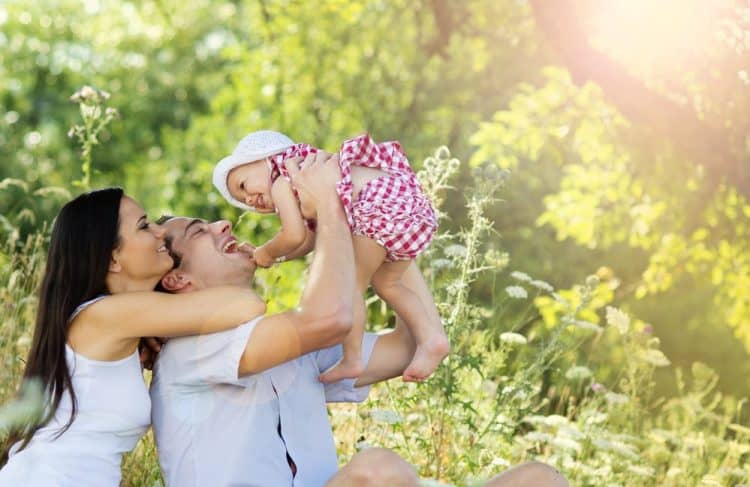This is a Live Vaccine. Hence, the person being vaccinated:
- Has a small risk of contracting Chicken Pox after being vaccinated.
- Has a very small risk of transmitting Chicken Pox to any contacts/ siblings.
- Should not have had any other live vaccine within 4 weeks of this vaccine.
- Should not be immunosuppressed or immunocompromised in any way.
Book the Chicken Pox vaccine for £138 with us (full course excluding administration fee).
How safe is the vaccine?
Since 1995, over 40 million chicken pox vaccine doses have been distributed in the USA.(6) The vaccine has been shown to be safe in healthy children.(7) If reactions occur, they are usually limited to fever or local reactions at the injection site. A skin rash occurs in about 7% of healthy vaccinees, either at the injection site or more generalised, and may be vesicular.(1),(8) Rashes caused by the vaccine usually appear approximately three weeks after immunisation. There is a small potential to transmit the vaccine virus at this time, mainly from direct contact with vesicles at the injection site.(1)
Vaccinated individuals appear not to be able to transmit the vaccine virus by the respiratory route, and papules (as opposed to vesicles) at the injection site are rarely infectious.
If a vesicular rash occurs following varicella zoster virus immunisation, it should be covered with a dressing and clothes if possible, careful hand washing should be encouraged, and the vaccinated individual should avoid contact with immunocompromised people, pregnant women (as much as practical) and be excluded from school only until the lesions have crusted.
Varicella zoster virus vaccine can be safely administered at the same time as other vaccines, although, if it is not given simultaneously, it should be given at least four weeks before or after other live vaccines. (4)
There have only been five reports of severe reactions in immunised children and they were later found to be immunocompromised. (6) No one is known to have died as a result of the vaccine virus.
How effective is the vaccine?
Varicella zoster virus vaccine is highly effective in children and adults. A single dose completely protects 85% of immunised children against developing clinical chickenpox. Immunised children who are not fully protected will almost always develop only a mild disease if exposed to varicella zoster virus; vaccine effectiveness against moderate or severe disease is 97%. (9)
Recently there have been some varicella outbreaks where the effectiveness of the vaccine was lower than expected.(10),(11),(12),(13) Children immunised more than four years previously appeared at increased risk of breakthrough disease in these outbreaks, although almost all cases had a mild disease. Despite having a mild disease, immunised children with breakthrough disease are contagious and should be subject to the same school exclusion criteria used for other cases of chickenpox.
Can the vaccine be used to prevent chickenpox after someone has been exposed?
The vaccine has been shown to be effective in preventing chickenpox if given within three days of exposure to varicella zoster virus (14), although it may still have some benefit if given up to five days after exposure.
Vaccination has also been effective in stopping varicella outbreaks, but in this situation it is recommended that the advice of public health personnel should be sought.(2),(15),(16) When not effective at preventing disease, post-exposure varicella vaccine may lead to milder disease in vaccinees.
How long does vaccine-induced protection last?
The evidence currently suggests that the vaccine usually remains protective for at least 10 years after immunisation, although the proportion of protected people may decline gradually after the first few years. Protective levels among many children vaccinated in Japan have persisted more than 20 years after vaccination.(9) However, studies into the duration of effectiveness have assessed the vaccine in an environment where wild varicella zoster virus infections and natural boosting of immunity are common. Significant boosting of the varicella immune response has been reported after second injections given 4–6 years after the initial immunisation.(17) However, booster doses are not currently recommended. As the use of varicella zoster virus vaccine increases and exposure to wild-type virus decreases in the community, it is possible that the duration of protection may decrease. Should this prove to be the case, a booster dose of vaccine may be warranted.
Conclusion: who should have the vaccine?
Although there are theoretical concerns that varicella zoster virus vaccine may alter the epidemiology of varicella zoster virus infections in the community, data from the USA where varicella immunisation has been routine since the mid-1990s suggest that the vaccine has had a positive impact.
Susceptible adults at high risk of exposure (for example healthcare workers, women prior to pregnancy, parents of young children, childcare workers and teachers) and all susceptible household contacts of immunosuppressed people should be given priority, but all healthy susceptible people over 12 months of age can be offered the vaccine.
Source from: Aust Prescr 2005;28:2-5 | 1 February 2005 | http://dx.doi.org/10.18773/austprescr.2005.001
Wonie Uahwatanasakul, Paediatric Fellow, Royal Children’s Hospital, and Jonathan R. Carapetis, Associate Professor, Department of Paediatrics, University of Melbourne, Infectious Diseases Consultant, Royal Children’s Hospital, and Research Fellow, Murdoch
References
1. Vazquez M. Varicella zoster virus infections in children after the introduction of live attenuated varicella vaccine. Curr Opin Pediatr 2004;16:80-4.
2. Litt J, Burgess M. Varicella and varicella vaccination. An update. Aust Fam Physician 2003;32:583-7.
3. Chant KG, Sullivan EA, Burgess MA, Ferson MJ, Forrest JM, Baird LM, et al. Varicella-zoster virus infection in Australia [published erratum appears in Aust N Z J Public Health 1998;22:630]. Aust N Z J Public Health 1998;22:413-8.
4. National Health and Medical Research Council. The Australian Immunisation Handbook. 8th ed. Canberra: Department of Health and Ageing; 2003. http://www.immunise.health.gov.au/handbook.htm [cited 2005 Jan 10]
5. Levin MJ, Smith JG, Kaufhold RM, Barber D, Hayward AR, Chan CY, et al. Decline in varicella-zoster virus (VZV)-specific cell-mediated immunity with increasing age and boosting with a high-dose VZV vaccine. J Infect Dis 2003;188:1336-44.
6. Gershon AA. Varicella vaccine: rare serious problems – but the benefits still outweigh the risks. J Infect Dis 2003;188:945-7.
7. Black S, Shinefield H, Ray P, Lewis E, Hansen J, Schwalbe J, et al. Post-marketing evaluation of the safety and effectiveness of varicella vaccine. Pediatr Infect Dis J 1999;18:1041-6.
8. White CJ, Kuter BJ, Hildebrand CS, Isganitis KL, Matthews H, Miller WJ, et al. Varicella vaccine (VARIVAX) in healthy children and adolescents: results from clinical trials, 1987 to 1989. Pediatrics 1991;87:604-10.
9. Vazquez M, LaRussa PS, Gershon AA, Steinberg SP, Freudigman K, Shapiro ED. The effectiveness of the varicella vaccine in clinical practice. N Engl J Med 2001;344:955-60.
10. Lee BR, Feaver SL, Miller CA, Hedberg CW, Ehresmann KR. An elementary school outbreak of varicella attributed to vaccine failure: policy implications. J Infect Dis 2004; 190:477-83.
11. Centers for Disease Control and Prevention (CDC). Outbreak of varicella among vaccinated children – Michigan, 2003. MMWR 2004;53:389-92.
12. Tugwell BD, Lee LE, Gillette H, Lorber EM, Hedberg K, Cieslak PR. Chickenpox outbreak in a highly vaccinated school population. Pediatrics 2004;113:455-9.
13. Galil K, Lee B, StrineT, Carraher C, Baughman AL, Eaton M, et al. Outbreak of varicella at a day-care center despite vaccination. N Engl J Med 2002;347:1909-15.
14. Asano Y, Nakayama H, Yazaki T, Kato R, Hirose S. Protection against varicella in family contacts by immediate inoculation with live varicella vaccine. Pediatrics 1977;59:3-7.
15. Ferson MJ. Varicella vaccine in post-exposure prophylaxis. Commun Dis Intell 2001;25:13-5.
16. Prevention of varicella. Update recommendations of the Advisory Committee on Immunization Practices (ACIP). MMWR 1999;48(RR06):1-5.
17. Kuter B, Matthews H, Shinefield H, Black S, Dennehy P, Watson B, et al. Ten year follow-up of healthy children who received one or two injections of varicella vaccine. Pediatr Infect Dis J 2004;23:132-7.
18. Seward JF, Watson BM, Peterson CL, Mascola L, Pelosi JW, Zhang JX, et al. Varicella disease after introduction of varicella vaccine in the United States, 1995-2000. JAMA 2002;287:606-11.



